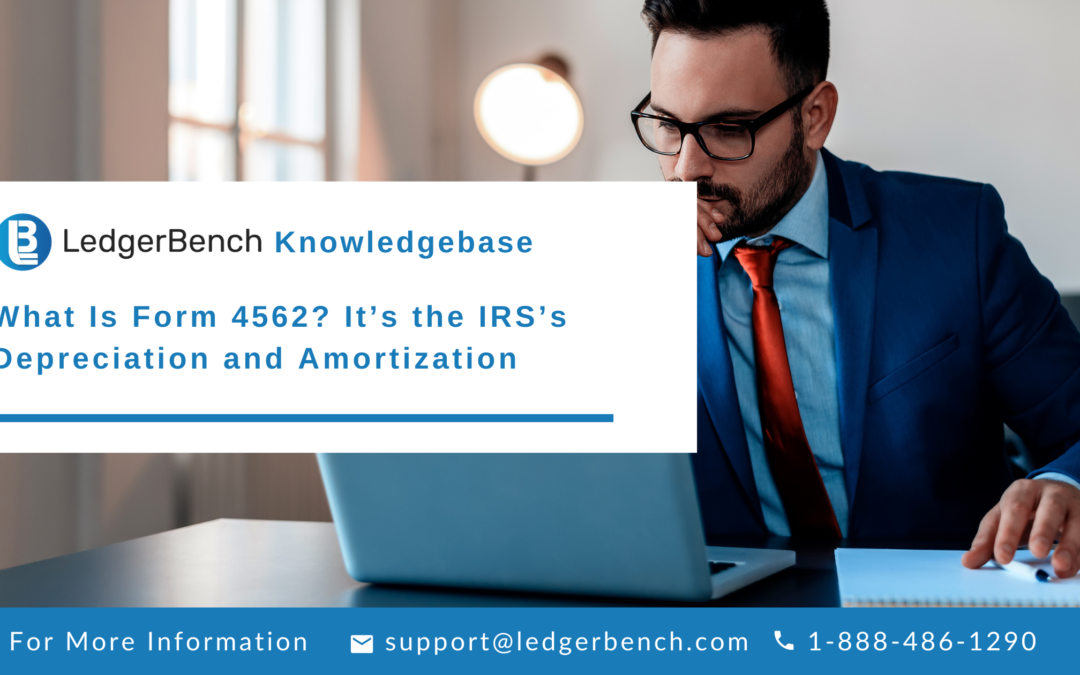
What Is Form 4562? It’s the IRS’s Depreciation and Amortization
IRS Form 4562 is used for filing tax returns, it’s an amortization and depreciation form.
Depreciation refers to the calculated loss of an asset though its working life span.
Amortization refers to an expensive purchase whose costs must be spread out over a number of years to lessen the impact on a company’s profit for the tax year it was purchased.
Do I need to file the IRS Form 4562?
You may need to file the form 4562 depreciation and amortization form for the purchase of the following for your business:
- Vehicles
- Renovations
- Patents
- Manufacturing equipment
- Intellectual Property
- Specified Plants
- Office equipment including computer hardware and software
- Office furniture, fixtures and carpet
- Real estate (buildings, excluding land. Land does not decrease in value)
The form can also be used for expenses related to films, television and live theatrical productions. Whether the purchase was made in full or financed, it wouldn’t matter for the purpose of amortization and depreciation.
Click Here to get IRS Form 4562
How do you calculate Depreciation?
To calculate depreciation, subtract the asset’s salvage value from that of the cost to determine the amount of depreciation. Divide this amount with the number of asset’s useful lifespan. Now, divide it by 12 to get the monthly depreciation for the asset.
Depreciation refers to the value of a business asset over its useful life.
Following is the information you may need to calculate depreciation:
- The useful life of the asset:
This information is available in the form of a table based on the type of asset. For the value of a specific asset, you will require an accountant to tell you the useful life of an asset.
- Minus the salvage value:
You need to minus the salvage value of the asset at the end of its useful life. Just like the useful life, salvage value is determined by the table.
- Divided by the cost of the asset:
This includes all costs to acquire assets such as transportation cost, setting up and training.
All this will result in the book value of the asset.
For instance, the annual depreciation on machinery with a useful life of 10 years, a salvage value of $1000 and a cost of $1,00000 is $9900 (1,00000 – $1000)/ 10
The asset must be placed in service in the first year that depreciation is calculated, for accounting and tax purposes.
For assets purchased in the middle of the year, the annual depreciation expense is divided by the number of months in that year since the purchase.
For full details on IRS guidelines regarding amortization and depreciation, please check here.
What is bonus depreciation?
Bonus depreciation is a method of accelerated depreciation. With the introduction of Tax Cuts and Job Act in 2018, businesses can now deduct the expense of qualified property at 100% of the purchase price in the year it was purchased. This instead of amortizing the asset cost over a number of years. The annual limits of these types of deductions have also increased to %100,0000 from $500,000.
Although the 100% bonus depreciation does not apply to vehicles, these bonus limits have also increased. A company taking an advantage of bonus depreciation will increase the company’s total expense in the year the purchase was made , reducing its total income by shrinking its profits, the 100% deduction will phase out. Bonus depreciation is optional. You can check new rules and limitations for depreciation and expenses under the Tax Cut and Job Act.
Should I take Bonus Depreciation or Section 179?
Section 179 is a part of the IRS tax code that allows a business to deduct the full purchase price of qualifying expenses in the year it was purchased. It is similar to Bonus Depreciation. It has different limits. While Section 179 can take a company’s income down to zero , bonus depreciation can show a loss in its books.
Typically, companies would consider taking Section 179 first, then bonus depreciation if applicable.

